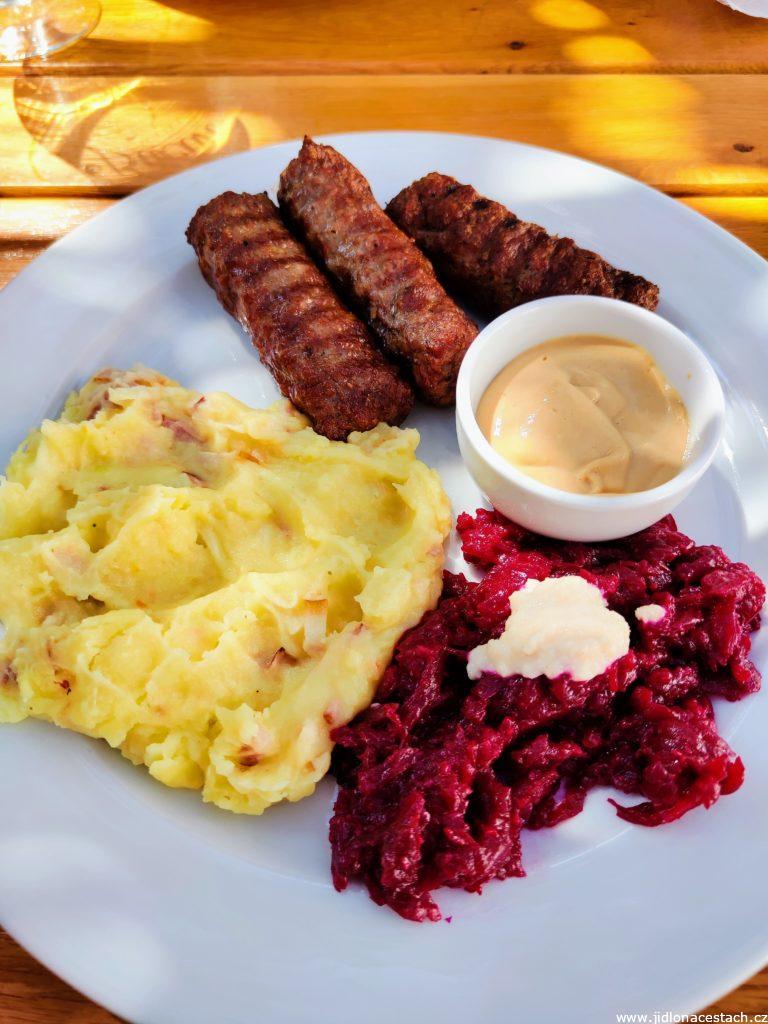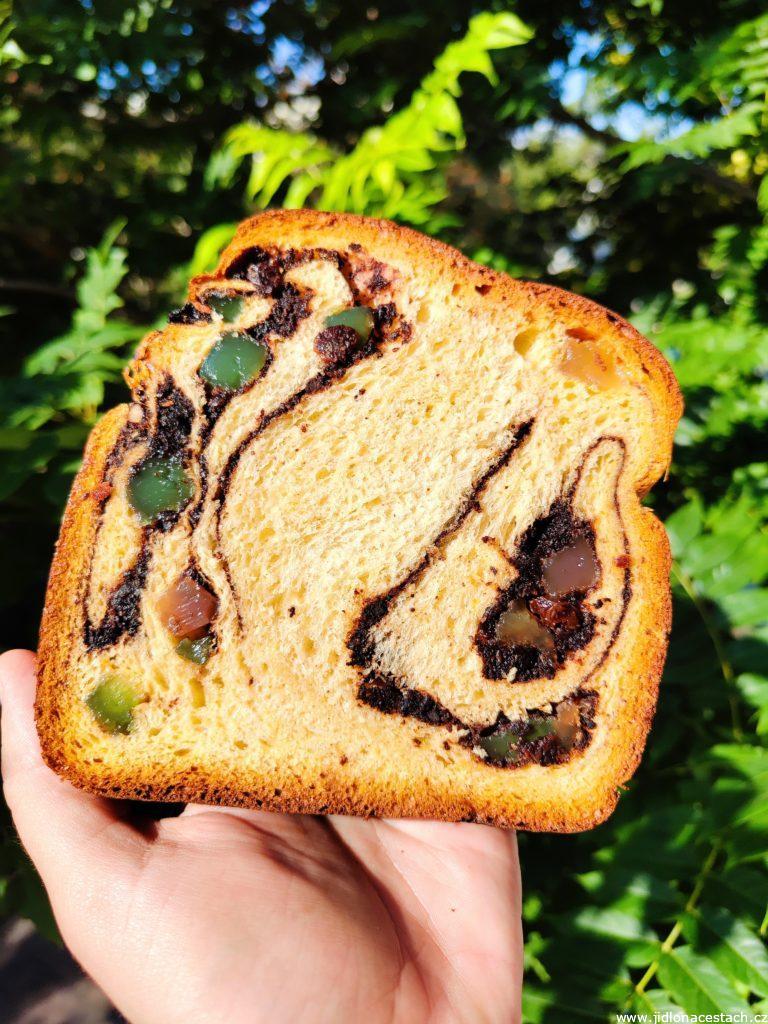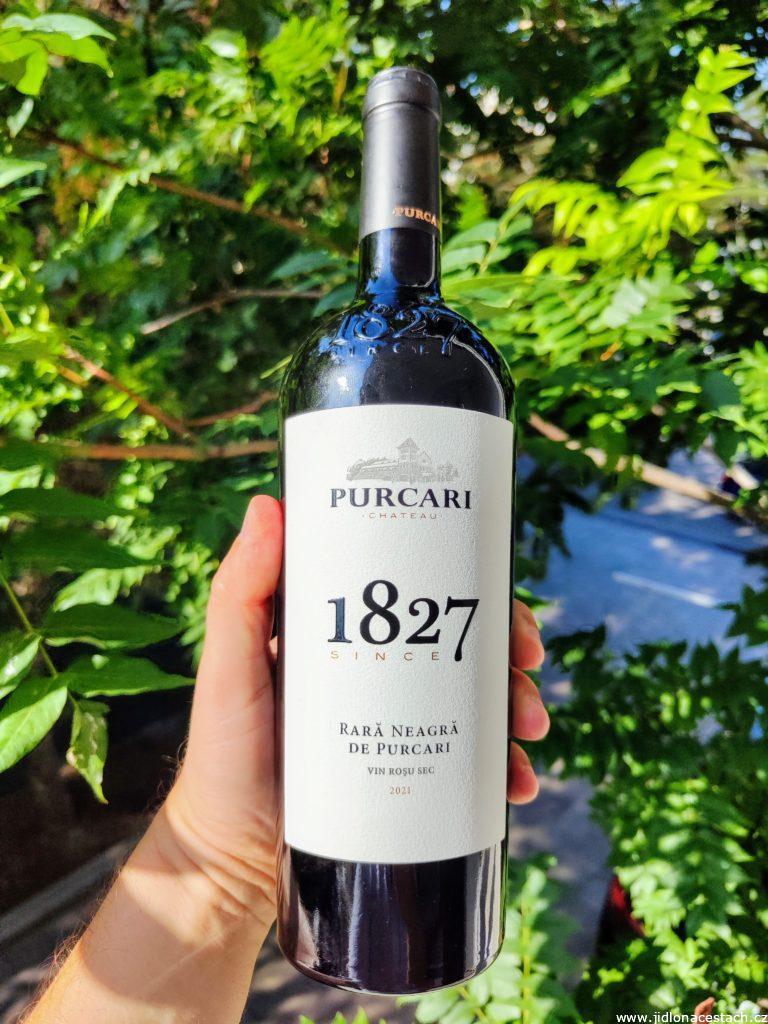Romanian cuisine is a secret waiting to be discovered. Influenced by history, geography, and a mix of cultures, it offers a palette of flavors that can captivate. From cheeses produced on mountain pastures, to traditional dishes like sarmale (stuffed cabbage leaves) and mămăligă (cornmeal porridge), to grilled mititei. Romanian cuisine celebrates simplicity, authenticity and hearty meat dishes. The Romanian wine is also exceptional, perfectly complementing local specialties.
Romanian soups
Ciorbă de rădăuțeană (creamy chicken soup)
Ciorbă de rădăuțeană is a traditional Romanian soup originating from the northern region of the country, specifically from Rădăuți. This sour soup is primarily made from chicken meat, especially breasts and thighs, which are cooked together with vegetables. The distinctive sour taste, characteristic of many Romanian soups, is achieved using borș (fermented wheat bran) or lemon juice. The soup is often enriched with a mixture of sour cream and egg yolks, giving it a creamy consistency.

Ciorbă de cocos (rooster soup)
Ciorbă de cocos is a popular Romanian soup made from poultry meat, but not just any – it’s from a rooster. This traditional dish is proof that Romanian cuisine strives to utilize everything possible. Rooster meat, known for its richer taste compared to regular chicken but also tougher, is cooked with various vegetables like onions, carrots and bell peppers. The soup’s characteristic sourness is achieved using borș or lemon juice. Lovage or parsley is often added for an aromatic touch.

Ciorbă de burta (tripe soup)
Ciorbă de burtă is often considered a hangover remedy. This soup is made from beef tripe, which is carefully cleaned, boiled and then cut into fine strips. The broth is enriched with garlic, vinegar and a mixture of sour cream and egg yolks. The taste is creamy. As with other Romanian soups, fresh spicy chili peppers can be added.

Ciorbă de perișoare (soup with meatballs)
Ciorbă de perișoare is a popular Romanian soup, showcasing the hearty nature of Romanian dishes. The star of this soup is “perișoare”, flavored meatballs typically prepared from a mix of pork and beef combined with rice, breadcrumbs, and various spices. These meatballs are then cooked in a spicy broth, which is soured with borș (fermented wheat bran) or lemon juice. Vegetables like carrots, celery, and bell peppers are added to the soup.

Romanian main dishes
Mititei (grilled ground meat rolls)
Mititei, often affectionately called “mici”, are extremely popular in Romanian gastronomy. These small cylindrical sausages are made from a mix of ground beef, pork and lamb meat and spices. Some recipes also contain baking soda, which gives the “mititei” a characteristic juiciness when grilled. The name “mititei” translates to “small”, referring to their small size. Traditionally, they are grilled over charcoal, which gives them a smoky flavor and accentuates the spices inside. After grilling, their outer layer is slightly crispy, while inside they remain juicy and aromatic. Mititei are served hot straight from the grill, usually with mustard.

Tochitură moldovenească (slow-cooked pork meat)
Tochitură moldovenească is a hearty dish originating from the Moldavian region of Romania. It consists of pork meat cut into small cubes, slowly prepared in its own fat in a cast-iron pot. Hence the name of the dish, “a topi” means “to melt” in Romanian. This traditional Romanian dish not only contains meat but also parts of the animal’s internal organs (liver, kidneys, heart) and bacon or whole sausages. Everything is prepared together. Tochitură moldovenească is traditionally served with “mămăligă” (cornmeal porridge) with a fried egg on top and salty sheep cheese (telemea or brânză de burduf).

Sarmale (stuffed cabbage rolls)
Sarmale are stuffed cabbage rolls. A filling of ground meat, rice and spices is carefully wrapped in fresh or pickled cabbage leaves. The meat is usually a mix of pork and beef. Making sarmale is an art passed down from generation to generation. Once wrapped, the rolls are layered in a pot and interspersed with smoked meat or bacon, adding more flavor. Sarmale is traditionally served with mămăligă (cornmeal porridge).

Mămăligă (cornmeal porridge)
Mămăligă is a staple of Romanian cuisine. Made from yellow cornmeal and water, it’s very similar to Italian polenta, but it holds a unique place in the heart of Romanian culinary traditions. In times when bread was scarce or expensive, mămăligă served as an affordable and filling alternative, especially among farmers and rural communities. Mămăligă can be enjoyed on its own, perhaps with a dollop of sour cream or sprinkled with cheese, but it’s often also served with other Romanian dishes.

Romanian desserts, sweets and savory snacks
Papanași (curd cheese doughnuts)
Papanași is a popular dessert in Romanian cuisine, often referred to as a dream for sweet lovers. It consists of fried or boiled doughnuts made from a mixture of cheese, flour, eggs and sugar. The fried version, which is the most popular, has a crispy exterior and a soft, fluffy interior. After preparation, papanași is traditionally drizzled with sour cream and a generous portion of fruit jam, often blueberry or cherry. The combination of sweet dough, sour cream and fruit jam creates a harmonious burst of flavors.

Covrigi (Romanian pretzels)
Covrigi are arguably the most famous Romanian street food. They are similar to German pretzels. This pastry has a rich history in the region, with roots tracing back to the influence of German bakers in Transylvania. Covrigi are made from yeast dough, shaped into a loop and briefly boiled in water with baking soda before baking, giving them a characteristic texture and shiny surface.
The surface of covrigi is often sprinkled with coarse salt, sesame seeds or poppy seeds, adding another layer of flavor and texture. Some modern versions even come with sweet fillings or glazes, though the traditional savory version remains the most popular.
Warm covrigi are a common sight in Romanian cities, especially in the morning when they are freshly baked. Vendors often sell them from small stands or carts, filling the air with their enticing aroma. For many Romanians, buying one of these pastries on their way to work or school is a daily ritual. Covrigi are not just a snack but also a symbol of the blending of cultures and traditions in Romania.





Cozonac (sweet bread)
Cozonac is a traditional Romanian treat, especially popular during festive occasions. This sweet bread is made from yeast dough with milk, butter and sugar. The dough is traditionally filled with a mixture of ground walnuts, cocoa, rum and candied orange peel, though poppy seeds and a Turkish delight called lokum are also popular fillings. After baking, cozonac boasts a golden-brown crust and a soft, aromatic interior with beautiful stripes from the filling. Its preparation often becomes a family affair, with generations gathering to share stories and exchange cooking techniques.

Plăcintă (filled pie)
Plăcintă, translated from Romanian, means “pie”. It can be found in various shapes and sizes and with various fillings, from sweet to savory. Common fillings include soft cheese, apples or potatoes. The chosen filling is carefully wrapped in thin dough and then baked or fried to a golden brown. Depending on the Romanian region, preparation and ingredients can vary, but the result is always a delicious treat.

Gogoși (Romanian filled doughnuts)
Gogoși are a delightful Romanian treat that resembles doughnuts in other national cuisines. This fried pastry is made from sweet yeast dough, often filled with jam, chocolate or sweet cheese, but savory fillings are equally popular. Gogoși are loved by both children and adults and are commonly served as breakfast, dessert or a snack. Their soft, fluffy interior combined with a slightly crispy exterior makes them irresistible.

Romanian specials
Romanian pickled vegetables
Romanian cuisine has a rich history of pickled foods. Pickling serves not only as a preservation method but also adds another level of flavor. One of the most popular Romanian fermented foods is murături, which is a pickled vegetable mix. Cucumbers, cabbage, red peppers, green tomatoes and cauliflower are often spiced with horseradish, mustard seeds and dill. Murături is used as a side dish to many Romanian dishes. Varză murdară is cabbage that is fermented as a whole and is the main ingredient for sarmale, the iconic Romanian cabbage rolls. And one cannot forget borș. Borș is a fermented liquid from wheat bran (not to be confused with the Russian soup borscht), which is used to sour traditional ciorbă soups.

Romanian cheese telemea de ibănești
Telemea de ibănești is a renowned Romanian cheese, famous not only for its taste but also for its cultural and historical significance. The cheese originates from the Ibănești region, where it has been produced for centuries, embodying the pastoral traditions of the Romanian countryside. It is primarily made from sheep’s milk and is characterized by a soft, for me hard-to-categorize, texture. The cheese undergoes a salting process, which gives it its distinctive saltiness and aids in its preservation. Over time, as the cheese matures, it acquires an even more pronounced flavor. Telemea de ibănești cheese is recognized in the EU as a product with a protected designation of origin (PDO).

Colivă (funeral cake)
Colivă is a symbolic dish in Romanian culture, primarily associated with funeral ceremonies and burials. This ceremonial food is made from boiled wheat berries and represents the cycle of life and death. The wheat, symbolizing resurrection and eternal life, is sweetened with sugar or honey and often mixed with crushed walnuts. Once prepared, colivă is decoratively arranged on a large plate, often in the shape of a cross, and adorned. Although colivă has somber connotations, it also embodies hope, remembrance, and the enduring spirit of Romanian traditions.

Romanian alcoholic beverages
Romanian beer
Romanian beer reflects the country’s rich agricultural heritage and evolving tastes. Popular local brands like Ursus and Timișoreana have deep roots in the country’s brewing history. In the past, beer was brewed in households and small local breweries, with ingredients sourced from the fertile Romanian plains. Today, as international lagers have gained widespread popularity and are produced by multinational breweries, the craft beer sector is growing. Microbreweries are experimenting with flavors, reviving old recipes and introducing Romanians to a diverse range of ales, stouts and IPAs.

Romanian Wine
Romanian wine boasts a millennia-long history. Romania is one of the oldest wine-producing regions in Europe. The diverse Romanian terroir, spanning between the Carpathians and the Black Sea, offers ideal conditions for growing various grape varieties. The country is famous for its indigenous varieties, such as Grasă de Cotnari and Fetească Neagră, but also thrives with international varieties like Merlot and Chardonnay. Wine-producing areas, including Moldova, Transylvania and Muntenia, produce wines with distinct characteristics and great taste.
Additional information
Romania and food prices in Iași
A large portion of ciorbă soups costs approximately 4 EUR, a great main course is around 8 EUR, and a dessert in a restaurant is about 4 EUR,. A lunch menu outside the city center costs roughly 4 EUR,.


Tipping in Romanian restaurants
It’s customary to tip in Romanian restaurants. While it’s not mandatory, it’s expected if the guest is satisfied. Typical tips range from 5 to 10% of the bill. It’s customary to leave tips in cash, even if you’re paying by card. Waiters rely on these tips as a significant part of their income.
Best restaurants in Iași
In the town of Iași, I highly recommend the Rustic restaurant, which aims to process traditional Romanian dishes in a modern way. I was also very satisfied with the Beraria Veche restaurant.

Michelin-starred restaurants in Romania (Bucharest)
Unfortunately, Romania does not yet have any restaurants represented in the Michelin guide.
What is the best Romanian food?
If I had to pick three personal favorites, the best Romanian food for me would be:
Romanian food festivals
- Food festival in Sibiu: The festival takes place in the beautiful city of Sibiu. It showcases traditional Romanian dishes, local products and international cuisine.
- Garlic festival in Ciucaș: This festival celebrates garlic, a staple of Romanian cuisine. It features various dishes where garlic is the star, from garlic sausages to garlic-flavored pastries.
- Pălincă festival: The festival is held in various locations, including the city of Oradea and celebrates pălincă, a traditional Romanian fruit brandy. Visitors can taste different varieties and learn about the distillation process.
- Mămăliga festival: The festival in the town of Știubieni pays tribute to the popular Romanian cornmeal dish. It showcases various recipes and preparations of this staple food.
- Sarmale festival: In the village of Daia Română, a festival celebrates sarmale, Romanian cabbage rolls. It’s a great opportunity to taste different versions of this popular dish.
- Street Food Festival in Bucharest: A modern addition to the Romanian culinary scene. In a vibrant urban setting, it brings together various cuisines, both Romanian and international.
- Wine festivals: Given the rich wine tradition of Romania, several wine festivals are held in different regions throughout the year, such as the Wine Festival in Ploiești and Vinobraní in Urlați.
Gastronomic souvenirs from Romania
With its rich culinary heritage, Romania offers a plethora of gastronomic souvenirs. Traditional Romanian spirits tuică and pălincă, distilled from plums or other fruits, capture the spirit of Romanian celebrations and make a valuable gift. The renowned Sibiu salami, with its distinctive flavor profile achieved through a unique aging process, is also an interesting souvenir for meat lovers. Romanian honey, especially from areas near the Carpathians, is pure and aromatic, with acacia and linden being particularly popular. Branză de burduf is an intriguing spicy sheep cheese preserved in pine bark. A sweet reminder of Romania’s abundant fruit orchards are artisanal jams made from fruits like cherries, blackberries or rosehips.
Enjoy Romanian cuisine!
